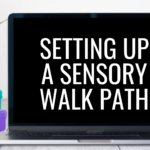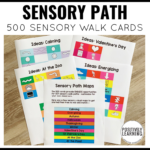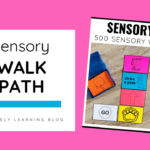
Maybe you've seen some pretty cool movement ideas, but wasn't sure where to start.
That's exactly how I felt before I implemented structured sensory and movement breaks in the resource classroom setting. Now I'm sharing what we learned!

Table of Contents
ToggleAlthough there are many variations, a sensory walk path usually consists of visuals or cards that are set up in a classroom, hallway, or home. A student follows the path while following the movements on each card. It's almost like an obstacle course, but it's a lot easier to set up!
After setting it up in the resource room, I learned a few tips right away:
Perhaps one of the BEST things I learned after incorporating structured movement was how VERSATILE it was to add these cards to our everyday learning activities.

Every child has unique needs and preferences, so that will be a huge factor in which activity cards you may want to use.
Here are our favorites:
My students loved the movement ideas so much that I got a little carried away and ended up making 500 of them! There's something for EVERYONE in this set!
Take a closer look at the cards here!

I’m Jennifer and I was a special educator in the elementary school setting over the past decade. I entered the classroom every day dedicated to making learning inclusive AND engaging.




















This website uses cookies to ensure you get the best experience on our website. See full disclosure here.
This website uses cookies to ensure you get the best experience on our website.
See full disclosure here.